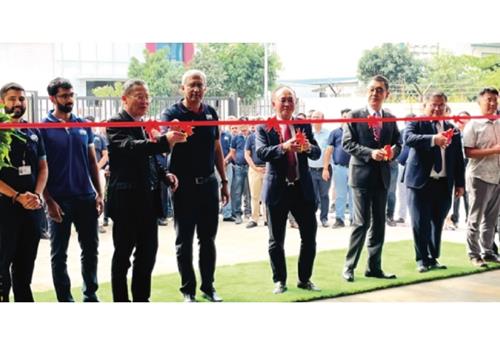Emissions, safety & electrification power SAE India's seminar
The event, which had a target audience comprising industry professionals, faculty and students, looked to highlight the technology trends in the two-wheeler industry, the challenges that lie ahead in the form of mandatory legislations and how OEMs and suppliers are working together to meet the deadlines.
Top-notch speakers from the two-wheeler industry debate existing challenges and future opportunities for the fast-growing sector at a seminar in Bangalore.
The domestic two-wheeler industry, particularly scooters, has been firing on all cylinders since the past couple of years and giving strong support to overall automobile sales. At over 17 million units sold in FY2017 (17,589,511: 5,604,601 scooters / +11.39% and 11,094,543 motorcycles / 3.68%, 8090,367 mopeds / 23%), this is one vehicle segment which shows no signs of slowing down. It is also the most affordable form of personal motorised transportation in India.
That was reason enough for SAE India, the local arm of SAE International, a premier professional society that serves the mobility engineering community engaged in design, manufacture and service of self-propelled vehicles and systems that move on land, air and sea, to host its first two-wheeler conference at PES University in Bangalore. The two-day event, held on August 4-5, was the first SAE India conference dedicated to the two-wheeler industry.
The event, which had a target audience comprising industry professionals, faculty and students, looked to highlight the technology trends in the two-wheeler industry, the challenges that lie ahead in the form of mandatory legislations and how OEMs and suppliers are working together to meet the deadlines.
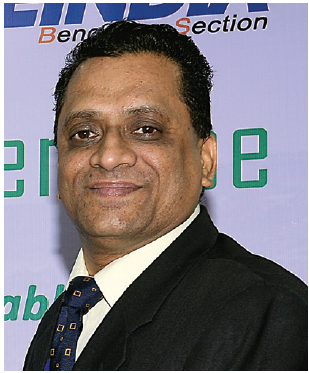
According to Dr Arunkumar Sampath, vice-president and chair, automotive board, SAE India, “Organising the first-ever SAE India two-wheeler conference has been a long-cherished dream that came true. It was to address the challenges of upcoming stringent regulations of safety and emissions and realising the electrification mission, proposed by the government of India. In line with the Make- In-India initiative, this conference aimed to act as a platform for OEMs, suppliers, vendors and educational institutions to come together to develop affordable battery and e-motor technologies to avoid import of these components, which is currently the trend.”
SAE India regularly organises Baja and Supra events engaging engineering students keen on working with the automotive industry. It also organised the first aerospace competition – named Manovegam – in April earlier this year in Tumkur, near Bangalore.
“In the past, we have been extensively focusing on aerospace, passenger cars and commercial vehicles. In FY2016-17, India has become the largest two-wheeler market in the world surpassing China. It is time to give this industry due attention that it deserves,” added J Munirathnam, CEO, Javaji M Consulting and chairman of SAE India, Bangalore section.
Further commenting on the need for a dedicated platform for the two-wheeler industry, Girish Ramaswamy, secretary, SAE India (Bangalore section) added, “The industry bodies and consulting agencies have never focused on the two-wheeler industry and the challenges that it faces. SAE India, a not-for-profit organisation, aims to support the two-wheeler industry, which deserves attention, thanks to its commanding volume and size. We aim to bring the key decision makers in the two-wheeler industry on one neutral platform so that they can pool in their challenges and discuss ways to bring the advanced technologies to India in order to meet the market demands and legislation deadlines.”
ENHANCING THE INDUSTRY-ACADEMIA CONNECT IN INDIA
The senior management at SAE India, which works closely with the universities in terms of providing the required training ground to the academia, chose to organise the conference at PES University with the intent of offering interested students an insight of the real-time challenges and upcoming opportunity areas in India’s two-wheeler segment.
Commenting on SAE India’s relationship with the academic institutions, Ramaswamy said, “SAE India is strongly bonded with the education system. It is working to reduce the industry-academia gap that exists in India more than the other developed nations. The aim behind organising the two-wheeler conference at the heart where engineering talent is bred is not only to bridge this gap (with the industry) but also to give them a potential direction in terms of the industry challenges and new opportunity areas. Through these platforms, the university faculties can also network with the industry professionals and get hands on knowledge of the real time requirements.”
CHALLENGES AND OPPORTUNITIES
The conference on the theme of ‘Green Wheeler for Safe and Sustainable Mobility’ revolved around safety, emission norms and electrification of vehicles.
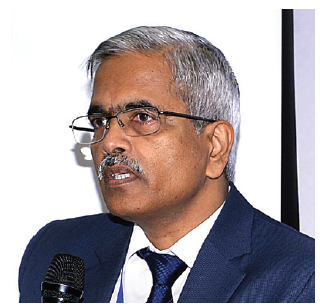
Day 1, which saw the presentation of several technical papers around BS VI emission norms and hybrid and electric powertrain systems, saw Vinay Harne, president, NPD, TVS Motor Company, deliver the keynote speech on the emerging challenges in the two-wheeler industry. Harne touched upon several key topics including how the clampdown on two-wheeler exhaust emissions has progressed under many regimes and the average city commuting speeds that consume maximum fuel under varying traffic conditions.
In one of his interesting forecasts for the near future, Harne’s presentation highlighted advances in lightweighting efforts. “The weight (of two-wheeler frames) used to be more than 47kg before 2010; it is expected to be less than 40kg in 2019,” he said.
Dr Rajiv Basargekar, director, APPL, the second keynote speaker, spoke on industry trends and evolving polymer technologies.
TWO-WHEELERS — THEN, NOW AND THE FUTURE
The highlight of the first day was the panel discussion on the theme of ‘Two-Wheeler Industry – Then, Now and the Future.’ The session, which saw participation from Vinay Harne of TVS Motor Company; Suraj Agarwal, operating head, new model vice-president, Honda Motorcycle & Scooter India; Ms Hemalatha Annamalai, MD and CEO, Ampere Vehicles; Prashanth A, general manager – engineering, two-wheeler & powersports – India, Bosch and Guruprasad, regional head, strategic business, ANSYS, was moderated by Autocar Professional’s assistant editor Amit Panday.
The Indian two-wheeler industry saw domestic sales cross the 17.5 million unit milestone in FY2016-17, thus becoming the largest in the world surpassing China, according to SIAM. Nevertheless, this remains strictly in the context of only the petrol-engine driven two-wheeler market and does not include their electric counterparts.
India’s two-wheeler sector is clearly driven by the scooter segment, which accounted for nearly 33 percent of the overall market in Q1 FY2018. Harne spoke about the evolution in the technologies associated with the Indian scooter segment, which was once dominated by the geared scooters. The Bajaj Auto-manufactured Chetak was known to be what Honda’s Activa is today. At its peak, more than 15 years ago, Bajaj Auto is understood to have commanded a market share in the range of 60-75 percent in scooters.
“The engine and continuously variable transmission (CVT) technologies in scooters have evolved over years. Several technology areas have seen an improvement over the years. These include power loss, the internal combustion process, vehicle weight and fuel efficiency. In future too these improvements will continue to take place,” added Harne.

Suraj Agarwal from Honda, which has recently launched its 110cc Cliq scooter in Rajasthan and Maharashtra, spoke about achieving the right cost mix, banking on the benefits derived from economies of large-scale manufacturing.
The Cliq borrows its proven air-cooled, single-cylinder, 110cc powertrain from the popular Activa 3G and Dio models. Top company officials have previously disclosed to Autocar Professional that the product and cost bandwidth was achieved only on the back of Honda’s deep-rooted expertise and synergies with other scooter models. With the Cliq’s ex-showroom pricing of around Rs 42,000, HMSI has successfully positioned the scooter at a sub-Rs 45,000 price point, which is also the price range of Hero MotoCorp’s most successful 100cc commuter motorcycles.
TACKLING EMISSIONS
Commenting on the challenges of implementing BS VI norms across old and new models, Agarwal said, “In Europe, Euro 5 regulations are coming from 2020 for new models and from 2021 for the existing models. In India, implementation of BS VI emission norms, which are derived from Euro 5 standards, is scheduled from April 2020 across all old and new models. This clearly means that India is going to be a year ahead of the European standards (in 2020). So the time given to the OEMs is relatively less in India and this applies to all SIAM members.”
“We are not very clear on the cost implications (of BS VI with OBD I and OBD II on two-wheelers) as we are still working it out. We will have OBD I along with the BS VI norms from April 1, 2020. There are certain challenges in Euro 5 norms with respect to OBD II, which are currently under discussion among the stakeholders in the European parliaments. Once these changes will get finalised, we will have to reflect similar changes in the Indian emission norms (BS VI with OBD II). This is so because India’s emission norms are derived from European emission standards. The anticipated changes are largely understood to be the adaptation of different test methods,” he added, making his point about the uncertainty in OBD II.
THE EV MINDSET
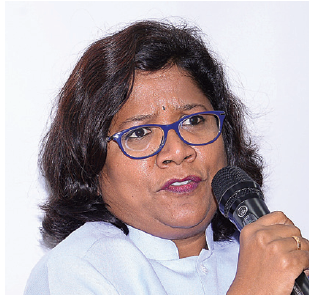
Hemalatha Annamalai, MD and CEO of Ampere Vehicles, an electric bike maker in Coimbatore, which has worked with individuals at the root level by empowering them with low cost transportation and commuting solutions, underlined an interesting observation in this context. “Rural customers are no different than the urban customers. In fact, rural customers are more flexible and willing to adopt newer means of commuting such as the electric two-wheelers. The mindset is fast-changing in the rural markets,” she added.
ABS-OLUTELY READY
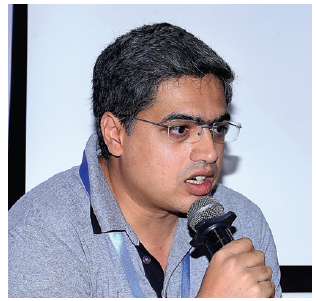
Talking on safety and giving suppliers’ perspective, Prashanth A, who looks after the engineering of powertrain (ICE and electric tech), safety and connectivity at Bosch said, “Bosch has the largest development centre in India outside of Germany. While there are efforts to increase the localisation of several technologies, there is a lot of value addition in terms of engineering for tailor-made solutions for India.”
Giving his outlook on Bosch’s preparation to take on the incoming demand for two-wheeler ABS units, Prashanth revealed that the company plans to commence mass production of the same at its Chakan plant very soon. He forecast that OEMs will equip the 200cc and smaller models with single-channel ABS units while the double-channel units will go on the models above 200cc engines. “However, in the long run, once the scale of production grows for the double-channel ABS units, they will be adapted by two-wheelers below 200cc as well. The double-channel units provide enhanced safety and greater flexibility in its applications,” he added.
Speaking of safety on electric two-wheelers, Hema revealed that the regulations and benchmarks in this context are yet to be drafted by the government-backed regulatory bodies.
Later commenting on the failure of electric two-wheelers to take off in India, she added, “It’s a myth that the electric two-wheelers are not as efficient and cannot carry loads. We are witnessing increasing requirements on the front of last-mile connectivity in rural areas. Even the models powered by the lead acid batteries are good enough for those applications. I see that it’s only the mindset that limits people to buy the EVs currently. However, this will change as soon as we are able to start manufacturing lithium ion batteries in India. The chemistry is fast evolving on the same.”

ANSYS’ Guruprasad sees all the challenges around emissions, safety and electrification in the industry as a pool of opportunities. According to him, OEMs have become very aggressive on their requirements on these areas.
As the panel discussion came to a close, the panelists were of the consensus that electric and connected vehicles have a bright future in India and they are looking forward to the unfolding of newer technologies and innovation. On its part, industry will have to make the effort to invest and gear up for a greener future.
(This article was first published in the August 15, 2017 print edition of Autocar Professional)
RELATED ARTICLES
BRANDED CONTENT: Serving India’s EV ecosystem
Shimnit Integrated Solutions Pvt. Ltd. (SISPL), a subsidiary of Mumbai's leading high-security number plate supplier, Sh...
Driving EV business with agility and flexibility
CEOs from the EV startup ecosystem met in Bengaluru and Pune to discuss the challenges and business opportunities.
BRANDED CONTENT: SM Auto and Gotech energy inaugurate their first battery pack assembly plant in Pune
Pune-based SM Auto Engineering (SMA), a leading automotive component system manufacturer and its partner Gotech Energy (...





 16 Sep 2017
16 Sep 2017
 10747 Views
10747 Views



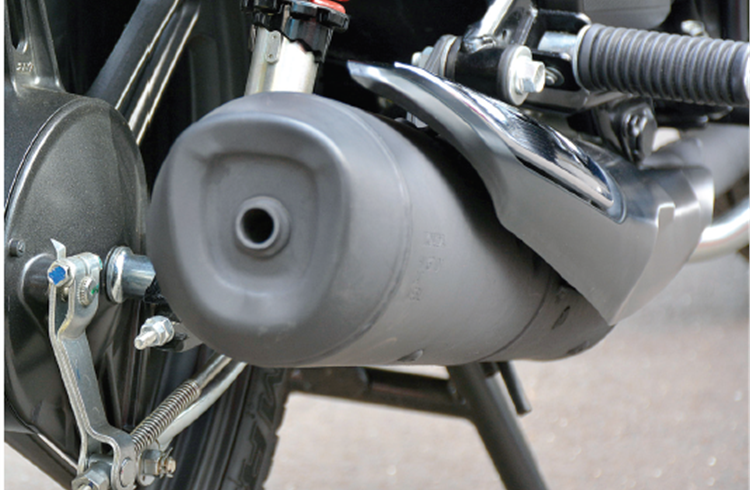

 Autocar Pro News Desk
Autocar Pro News Desk


